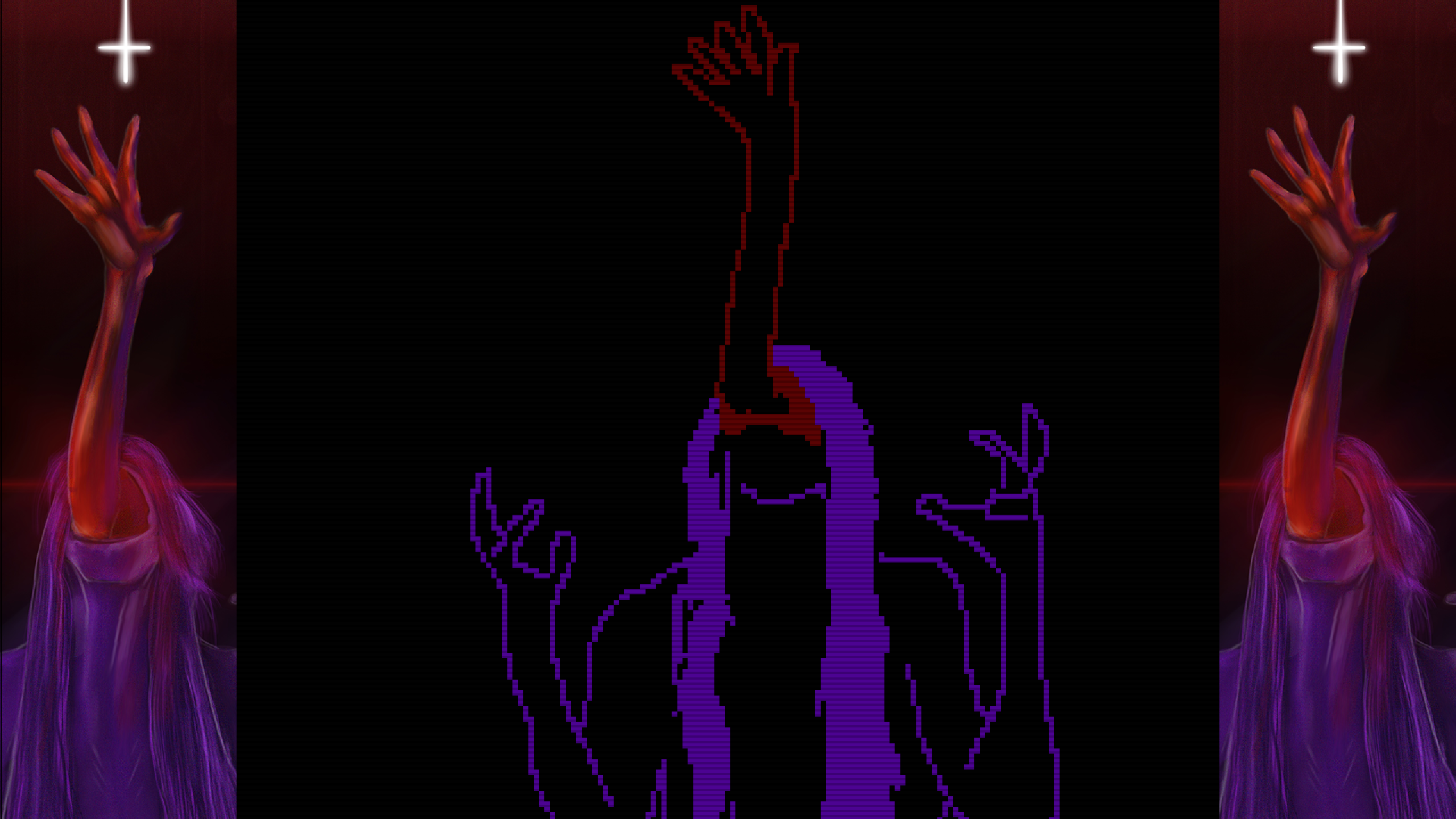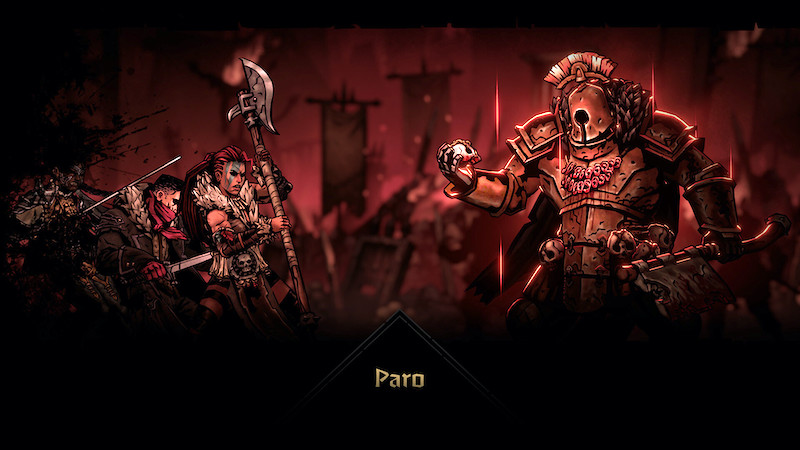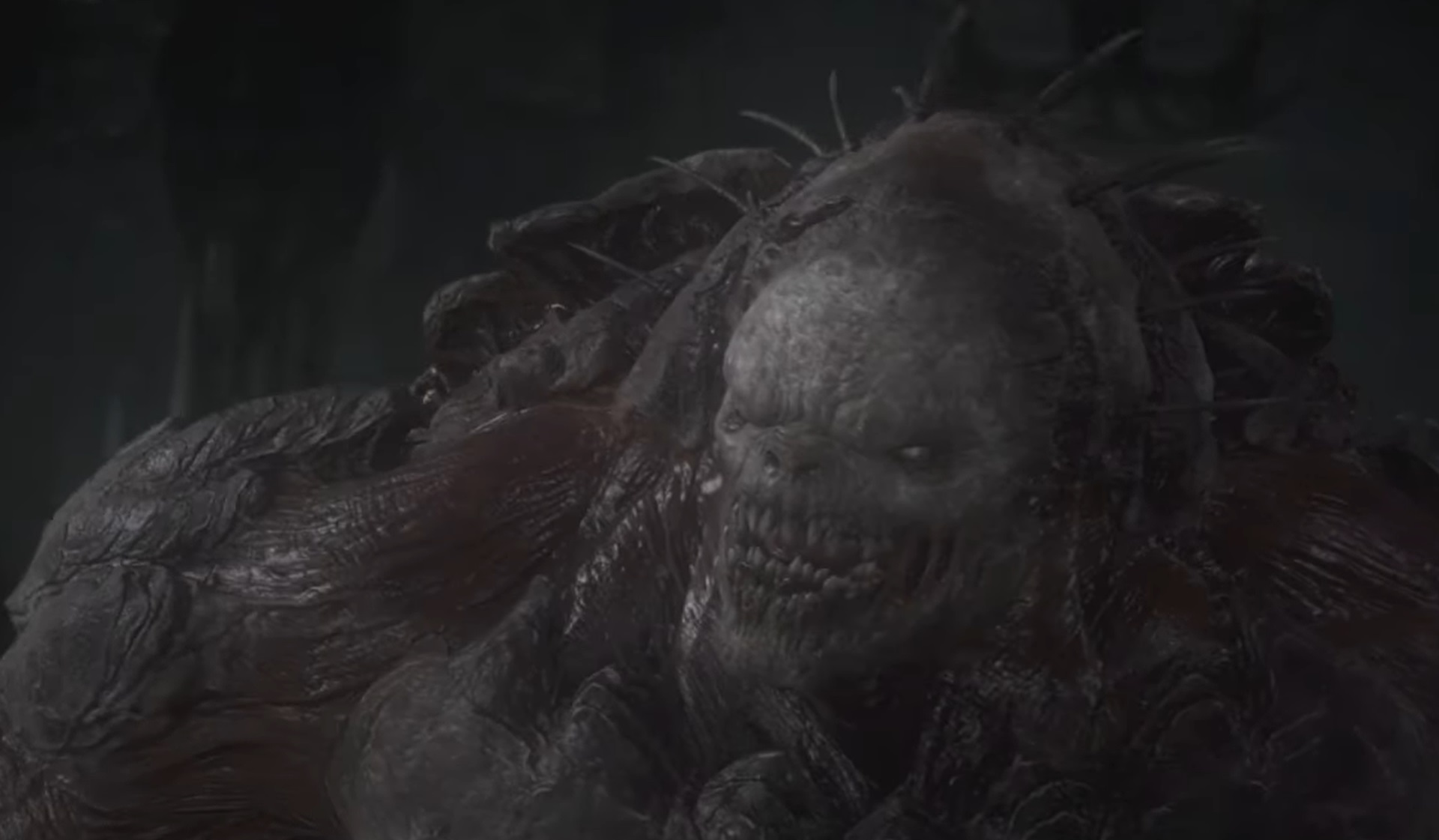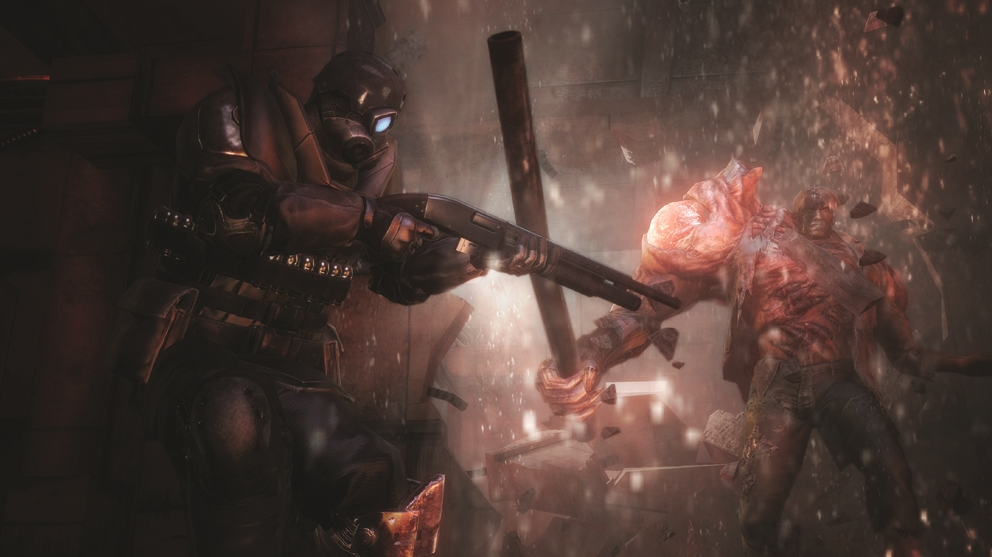
Monster Mania: The Chunky Horrors of Airdorf’s Faith
Monster Mania is a weekly column celebrating the unique and varied monster designs in horror gaming.
Graphics were a big deal to me growing up. As an impressionable (and very dumb) youth, I placed games worth on their appearance. While my classmates wanted to talk about the expansive sandbox of Grand Theft Auto: San Andreas, I couldn’t shut up about the horrors of Doom 3 or Half-Life 2. Nevertheless, my fixation on graphics would result in spending countless hours tweaking my family’s shared PC to play games in their utmost fidelity, as that was the “proper” way to experience games. With age and some level of maturing, this fixation with graphics fell to the wayside in favor of seeking out games no matter their appearance. Within the last few years, this has resulted in my scouring the likes of Itch.io for the newest and most varied bite-sized slices of horror, no matter the graphical style they adopt. And there is no finer example of NOT judging a game by its chunky pixels than Airdorf Games’ Faith’s horrifying journey into a satanic panic.

Faith is a survival horror game released in three chapters over five years. Each chapter follows a young priest confronting and attempting to dispatch demonic and satanic forces. Faith’s graphical style can be best described as an homage to the Atari and Apple II design era of pixelated graphics that, by today’s standards, would be described as antiquated. Just ask my roommate, who walked by while I was replaying Faith and asked me if my PC was on the fritz. My well-meaning roommate didn’t understand that Airdorf Games has purposefully utilized this antiquated graphical style to tell a story filled with horrors that some might say are too extreme for modern 3D. For example, despite demonic monsters’ flatness, they are expressive and feature disturbing details, with most demons not abiding by any singular morphology, making each new encounter that much more exciting (in a sicko horror fan kind of way).
While Faith utilizes 2D flat pixels when exploring environments, cutscenes use a disturbing rotoscope motion visual style. To say the graphical techniques are a drastic contrast to one another would be an understatement and one that emphasizes Airdorf’s unique visual language. These rotoscope cutscenes are most easily described as nightmare fuel that brings Airdorf’s disturbing brand of horror to life. Rotoscope animation allows the monster’s relatively simple lines and colors to continually move in place as if the monsters themselves are constantly reverberating, even when standing still as if the evil within them is squirming to escape. For instance, a memorable monstrosity is a peekaboo demon, an armless humanoid with bloody hands attached to its face, covering its eyes. As the monster slowly shuffles towards the player, its hands slowly begin to move, revealing its look, and if the player is caught within their gaze while moving, the hands will move away, showing a bloody hole as the demon charges the player. My favorite demon design is Amy Martin, a possessed teen whose face was sliced off by crazed cultists and turned into a portal where an arm emerges, dragging those who get too close to hell. All three chapters of Faith are filled with deranged demons with bristling personalities, thanks to the old-school rendering of their design.

Would these designs be impossible to produce in a traditional 3D game? No. Would they be nearly as affecting and genuinely unsettling in 3D? Also no. The jangly, reverberating quality of each monster and their frequently staring past the monitor, seemingly right at the player, continually gives players an uncomfortable pause. Think about the first time you watched either iteration of Ringu when Samara climbs out of the TV. That’s how I felt during each of Faith’s cutscenes. You are powerless to look away from that which calls to you.
I’d be remiss not to acknowledge that Faith’s commitment to chunk translates to the game’s audio design. Utilizing the bleeps and bloops of the design era, Faith is emulating is used to terrifying effect. While loud screeches at peak panic moments aren’t unheard of in indie horror, Airdorf reserves these for critical moments of dread rather than an overabundance. This makes both cutscenes and gameplay have spikes of silver screen-like terror, playing against the game’s terrifically ominous score.
Faith is one of several success stories within the indie horror gaming space that continually stayed true to its unique vision of horror. By doing so, Airdorf was rewarded with not only a critical success a lovingly hardcore fandom, as well as publisher interest, which would result in all three chapters being put into a single collection, Faith: The Unholy Trilogy, and published by New Blood Interactive. Faith has the type of success stories we’d want for all solo devs looking to make a name with a singular brand of horror.
For more horror game reviews, opinions, and features, check out DreadXP.




